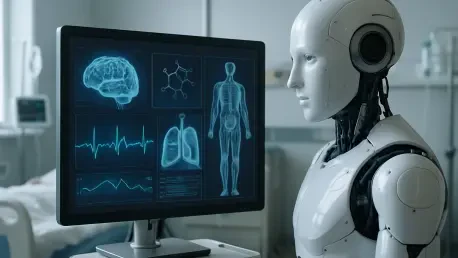I’m thrilled to sit down with James Maitland, a renowned expert in robotics and IoT applications in medicine. With a deep passion for harnessing technology to transform healthcare, James has been at the forefront of integrating cutting-edge solutions into medical practices. Today, we’ll explore the latest advancements in AI within the healthcare sector, diving into innovative platforms that streamline operations, enhance patient care, and tackle financial challenges for providers. From AI-native systems to specialized tools for rural hospitals, James will share his insights on how these technologies are reshaping the industry and what the future might hold.
How are AI-native updates, like those integrated into certain electronic health record platforms, changing the game for small and independent medical practices?
AI-native updates are a game-changer for small practices because they embed intelligent automation directly into the core systems, rather than tacking on extra tools that require separate learning curves or costs. For instance, in revenue cycle management, these updates can automatically handle tasks like insurance selection or claims processing, slashing manual work by a significant margin. For small practices, this means staff can focus more on patient care rather than paperwork, while also seeing faster payments and fewer claim denials. It’s about simplifying complex back-office tasks with technology that works seamlessly in the background.
What kind of impact do these AI tools have on the day-to-day user experience for physicians and their teams?
The impact is profound, especially in creating a smoother workflow. Physicians often deal with clunky interfaces or time-consuming documentation, but AI can streamline these processes with intuitive designs and automation. For example, clinical documentation becomes faster with intelligent summaries that pull key data points automatically. Patient engagement also improves through better interoperability, where systems talk to each other effortlessly, ensuring that providers and patients stay on the same page. It’s about reducing frustration and giving doctors more time to do what they do best—treat patients.
How do AI features specifically address the complexities of revenue cycles in healthcare practices?
Revenue cycles are notoriously complex due to issues like prior authorizations, claim denials, and delayed payments. AI tackles these by automating and optimizing each step. For prior authorizations, AI can predict requirements and submit them faster with higher accuracy. In claims processing, it flags potential errors before submission, leading to cleaner claims and fewer rejections. This cuts down on the back-and-forth with insurers, which is a huge time sink for practices. Ultimately, it’s about getting providers paid quicker and with less hassle, which is critical for their financial health.
Can you share your thoughts on how AI tools are helping rural hospitals manage challenges like high claim denial rates?
Rural hospitals face unique struggles, with denial rates often much higher than urban counterparts due to limited resources and staff. AI tools, like claims denial navigators, are stepping in to streamline the resolution process. These tools analyze denied claims, suggest the best actions to resolve them, and even learn from past outcomes to improve over time. For a rural hospital, this means saving significant administrative costs—potentially hundreds of thousands annually—and improving cash flow. It’s a lifeline for facilities that are often on the brink of closure due to financial pressures.
With so many companies rolling out AI innovations in healthcare, what do you think sets apart a truly effective AI solution from the rest?
A truly effective AI solution in healthcare isn’t just about flashy features—it’s about integration and outcomes. Solutions that are built into the core infrastructure, rather than being add-ons, tend to be more seamless and less burdensome for users. They also need to show measurable results, like reduced manual work or improved claim approval rates. Additionally, the best solutions are adaptable, learning from user feedback and evolving with the needs of providers. It’s the difference between a tool that just sounds good on paper and one that genuinely transforms workflows.
How do you see AI expanding its role in healthcare beyond current applications like revenue cycles and claims management?
I believe AI’s role will grow into more clinical and personalized areas. We’re already seeing early steps with tools for workflow automation and intelligent summaries, but the future could bring AI that assists in real-time diagnostics or personalized treatment plans based on vast data sets. Imagine AI predicting patient outcomes or flagging potential health risks before they become emergencies. Beyond that, AI could play a bigger role in telemedicine, making virtual care more intuitive and effective. The potential is vast, especially as data integration improves across systems.
What is your forecast for the future of AI in healthcare over the next decade?
Over the next decade, I expect AI to become an invisible yet indispensable partner in healthcare. It’ll move beyond administrative tasks to deeply influence clinical decision-making, with algorithms that are trusted as much as human judgment in certain contexts. Interoperability will be key—systems will need to share data seamlessly to maximize AI’s potential. We’ll also see a push towards equity, with AI tools tailored to underserved areas like rural communities. However, the challenge will be balancing innovation with regulation to ensure patient safety and privacy. It’s an exciting time, but it’ll require careful navigation to get it right.









